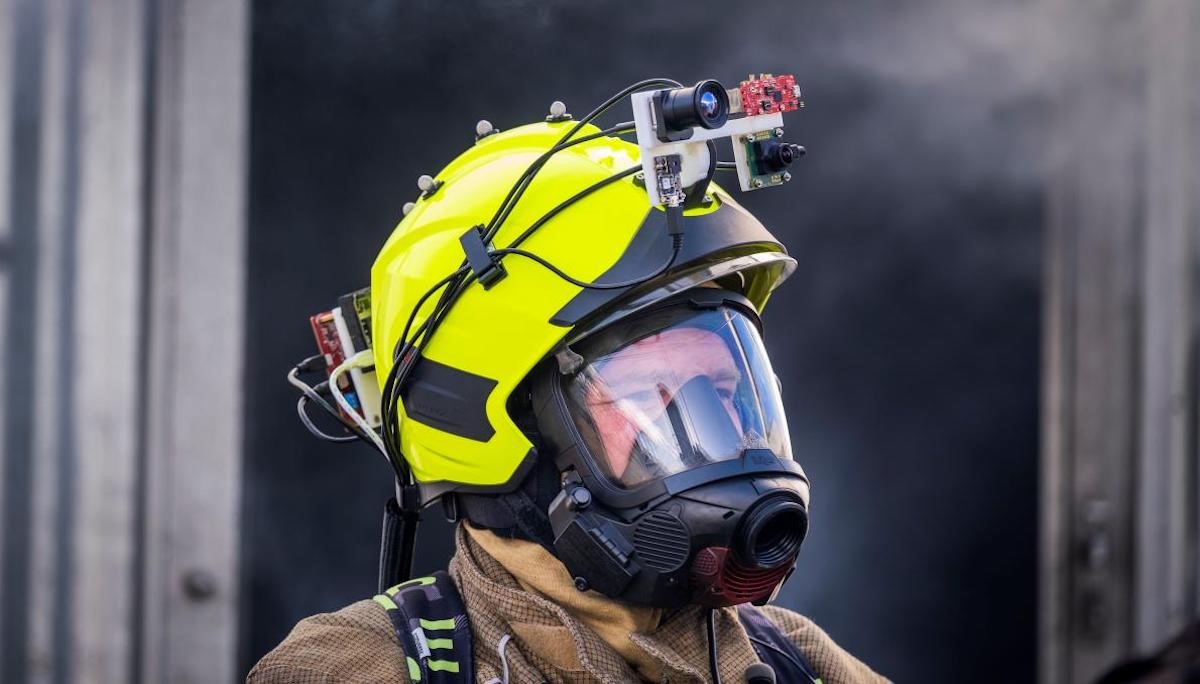Investigadores de la Universidad de Edimburgo han desarrollado una tecnología que empleando IA en sus cascos y equipamiento, podría ayudar a los bomberos a mapear más rápidamente su entorno, desplazarse en entornos peligrosos y llevar a las personas a un lugar seguro. Estos sistemas fueron exhibidos el 28set22, como parte de la inauguración oficial del National Robotarium realizado en esa ciudad.
Researchers at the University of Edinburgh have developed a technology that could help firefighters more quickly map their surroundings, navigate hazardous environments and get people to safety, which will be showcased as part of the official opening of the National Robotarium on Wednesday.
The device uses artificial intelligence (AI) to combine data from thermal-imaging cameras, radar and other sensors mounted on standard-issue fire helmets, giving firefighters real-time information from fire scenes. The entire sensor rig weighs less than one kilogram and uses affordable, off-the-shelf parts that are easy to fit onto standard-issue fire helmets.
It is hoped the technology could help emergency services more safely navigate dangerous or low-visibility conditions and reduce the time it takes to rescue victims.
“Firefighters often operate in environments with very low or no visibility due to the vast amount of smoke released from a fire,” said Dr Chris Lu, who is leading the project. “This can make detecting the location of potential victims and the whereabouts of firefighters very challenging in situations that are often extremely time-sensitive.
“This new technology has the potential to support on-the-ground firefighters and scene commanders to make crucial in-the-moment decisions that can enhance search rescue efficiency, ensure safer collaboration between teammates and, most importantly, improve outcomes for potential victims of fire scenes.”
Field trials of the new technology have been conducted with members of the Scottish Fire and Rescue Service at their £10.5m training facility in Newbridge, Edinburgh.
“We are proud that our staff at our Newbridge Training Centre have been able to support with the trialling of this technology,” said Bryan Todd, group commander in training, safety and Assurance at Scottish Fire and Rescue Service.
“Safety, teamwork and innovation are three of our core values as a service and we always welcome opportunities to work in partnership with higher-education organisations and the fantastic work they do in exploring ideas to improve community and firefighter safety.”
The launch of the AI fire helmet technology comes as the National Robotarium’s new £22.4m facility officially opens its doors. The new facility – part of the Data-Driven Innovation (DDI) initiative – is supported by £21m from the UK government and £1.4m from the Scottish government.
The DDI initiative forms part of the wider £1.3bn Edinburgh and South-East Scotland City Region Deal, which aims to establish Edinburgh as the data capital of Europe.
The team at the University of Edinburgh aims to develop the technology further to give the helmet the ability to create 3D maps and to provide wearers with a built-in display screen.
In recent years, several key technological innovations have been developed to protect firefighters and support them in their dangerous mission. Last month, a team of scientists from the US National Institute of Standards and Technology and the Hong Kong Polytechnic University developed an AI model to forecast flashovers precious seconds before they erupt.
In 2015, scientists from King’s College London and Sheffield Hallam University tested the possibilities of using robots equipped with tactile sensors to serve as guide dogs for firefighters in smoked-filled interiors, enabling them to identify objects and obstacles.
Fuente: https://eandt.theiet.org


